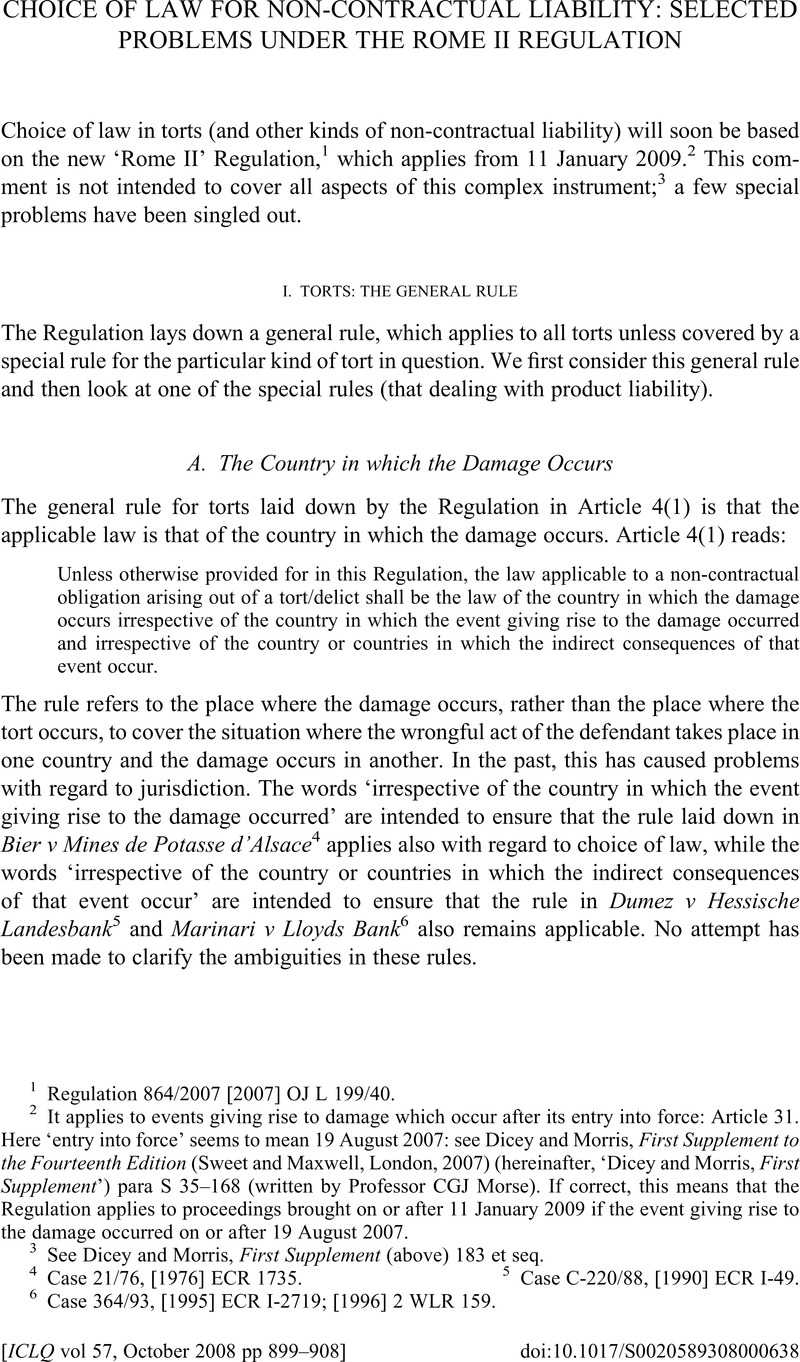Published online by Cambridge University Press: 18 November 2008

1 Regulation 864/2007 [2007] OJ L 199/40.
2 It applies to events giving rise to damage which occur after its entry into force: Article 31. Here ‘entry into force’ seems to mean 19 August 2007: see Dicey and Morris, First Supplement to the Fourteenth Edition (Sweet and Maxwell, London, 2007) (hereinafter, ‘Dicey and Morris, First Supplement’) para S 35–168 (written by Professor CGJ Morse). If correct, this means that the Regulation applies to proceedings brought on or after 11 January 2009 if the event giving rise to the damage occurred on or after 19 August 2007.
3 See Dicey and Morris, First Supplement (above) 183 et seq.
4 Case 21/76, [1976] ECR 1735.
5 Case C-220/88, [1990] ECR I-49.
6 Case 364/93, [1995] ECR I-2719; [1996] 2 WLR 159.
7 Having his habitual residence in England.
8 Having her habitual residence in Scotland.
9 This would not be affected by any decision (under the second paragraph of Article 25) as to whether or not the Regulation will apply as between England and Scotland.
10 See Articles 10–13 of the Regulation.
11 England and Wales are not: they constitute one ‘country’ for the purposes of the Regulation, even though politically and culturally they are different countries.
12 The common law in each state is a separate legal system. The US Supreme Court has no jurisdiction to interpret it. Subject to minor exceptions, there is no federal common law: Erie Railroad Company v Thompkins 304 US 674; 58 S Ct 817; 82 L Ed. 1188 (1938).
13 Lange v Australian Broadcasting Corporation (1997) 189 CLR 520 at 563.
14 The position appears to be the same in the common-law provinces of Canada, but Quebec is clearly a separate country.
15 They attended the same university.
16 The same problem of definition arises under the third paragraph of Article 4, though it might be possible to use it to apply the law of one particular state.
17 Article 3544(1).
18 The words ‘in particular’ are EC jargon indicating that this is not intended to exclude other possibilities.
19 Since the ‘however’ clause refers to the law of the producer's habitual residence, it would lead to the same result as Article 4(2); so it does not matter whether it qualifies Article 4(2) or not.
20 It is thought that the same is true of French.
21 Since we would not have reached the situation we are considering if the second paragraph of Article 4 had been applicable, we are really concerned only with the first and third paragraphs.
22 This is subject to the escape clause in Article 4(3).
23 The defendant would be habitually resident in either Germany (central administration) or England (if there is a branch there) but not in France. This would be true even if it had a branch in France: a company is not habitually resident where it has a branch unless the event giving rise to the damage, or the damage itself, arises in the course of operation of the branch (Article 23(1)). If the contaminated can was bought in England, the existence of a branch in France would be irrelevant.
24 If this was the case, German law would apply.
25 It would make no difference if it had a branch in Belgium, since the vehicle in question would not have been sold through that branch: see previous footnote.